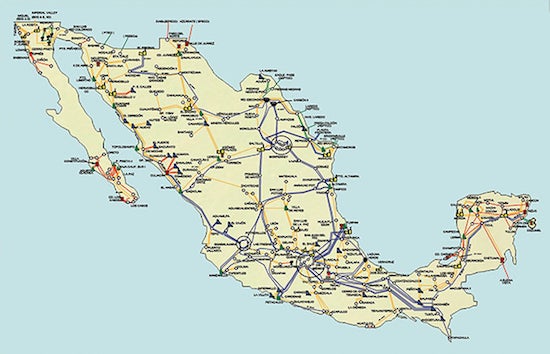This article was published in Scientific American’s former blog network and reflects the views of the author, not necessarily those of Scientific American
Prior to 2014, the Mexican electricity system was more or less solely owned and operated by the state Federal Electricity Commission (CFE). Electricity generation, delivery, and retail sales functioned according to a cost-of-service model, where CFE built new power plants and power lines according to its best judgment, and then passed along the cost to consumers.
That all changed in August of 2014, when the Electric Industry Act formally broke up the state-owned monopoly CFE and established a new, competitive, electricity market.
Under the new market structure, independent investors — including international companies — can own power generation and sell energy into a competitive wholesale market organized by the newly-formed entity CENACE (Centro Nacional De Control De Energía), which serves as the independent electric grid and market operator, not unlike U.S. electricity market operators like the Electric Reliability Council of Texas (ERCOT), the Midcontinent Independent System Operator (MISO), and others.
On supporting science journalism
If you're enjoying this article, consider supporting our award-winning journalism by subscribing. By purchasing a subscription you are helping to ensure the future of impactful stories about the discoveries and ideas shaping our world today.

Mexico's Electricity Transmission Grid (Source: T&D World)
The transmission and distribution grids that connect generators to loads will remain regulated on a cost-of-service basis. This means that new power lines will still be financed by small charges added to each customer’s bill. However, the transmission grid will operate around a new open-access paradigm, which gives any generator owner the right to interconnect to the transmission grid in order to deliver their power to customers. Furthermore, new transmission and distribution planning will be done in an independent way that considers costs and benefits to the entire electric grid and market before actual transmission and distribution construction begins. This model of regulated but open-access power grids is identical to strategies used in competitive U.S. electricity markets.
Retail electricity sales to customers will also remain regulated. In other words, customers will have just one electric utility to choose from, and the utility will set its prices under regulation from the government. This system is not unlike California’s electricity market structure, which has a competitive wholesale electricity market but regulated retail sales. Other U.S. states like Texas have competitive wholesale and retail markets, which allow customers to pick from a number of different retail electric providers.
Another major change introduced by the Electric Industry Act is a new incentive program for clean energy technologies. Mexico will create a market for tradable Clean Energy Certificates (CELs). Clean electricity generators, which include wind, solar, biomass, hydroelectric, combined heat and power, and new nuclear plants, will receive one CEL for every megawatt-hour of electricity they produce without using fossil fuels. In turn, electricity suppliers that sell electricity to end-users and large industrial users will be required to purchase a certain portion of their electricity from clean energy sources in the form of CELs. This system is not unlike the renewable energy certificates (RECs) market in the United States that is used to comply with state renewable portfolio standards (RPS), which require utilities to generate a certain portion of their electricity from renewable sources.
Put together, Mexico’s electricity market reform efforts are poised to bring about monumental change to the country’s electricity system. It is expected that a significant amount of Mexico’s existing (and expensive) oil-fired electricity generation will be replaced with new, efficient combined-cycle natural gas generation. Furthermore, Mexico has set the ambitious goal of obtaining 35 percent of its electricity from clean energy sources by 2024, so expect a significant amount of renewable energy development in the coming years.
It looks like Mexico’s electricity system is headed toward a more transparent, cleaner, and more efficient future. Mexico’s path forward is not without its challenges, but one has to admire the speed at which the Mexican government has implemented reforms with the hope of improving its energy system.
Agenda image credit: Wikimedia Commons